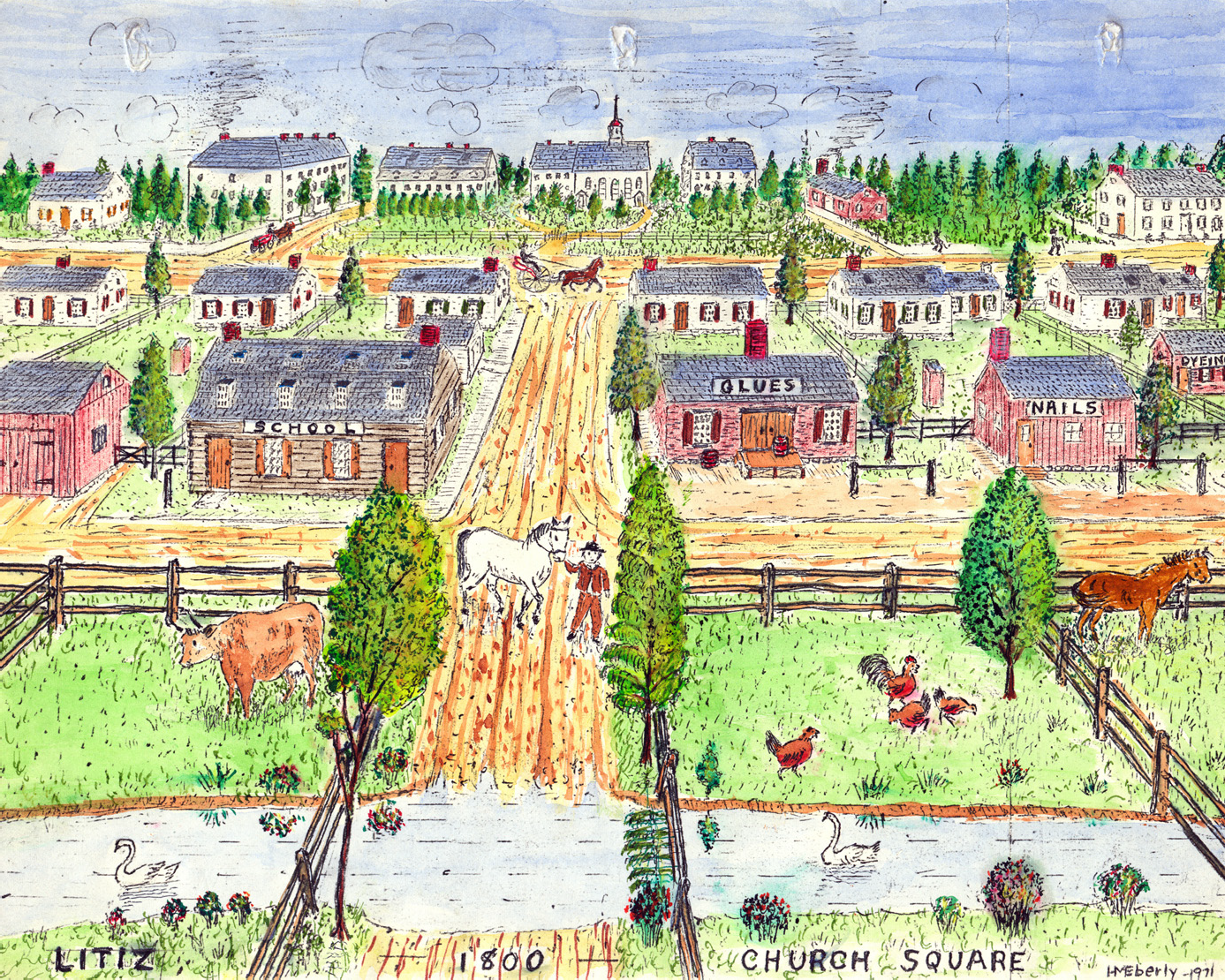
The 1759 plan for Lititz was a village to cluster around Church Square. By 1800 this was com- plete and a thing of beauty. For the most part shops were kept back of the stone buildings.
Most of these were on the north side of Main Street throughout the town and business was done from North Lane.
Main Street was on the busy North-South route while Water Street was an important thorofare (sic) leading to Clay and the Horseshoe Pike. However when the creek was flooded it was nec- essary to cross at Oak Street over the Carding Mill dam.
When the planners came here in 1756 they saw a successful irrigation project in Rome where John Bender furnished water from his dam. Fourteen years later the entire valley from Broad to Locust Streets was fenced in with twenty pasture plots. An irrigation ditch near Front Street ran the entire length and the tenants (for $1.25 a year) flooded their land at will. This was also used to water the orchards. Stock and fruit raising were the only thing that made farming profitable.
South of Main Street was the John Kreiter cottage, the Linden Hall building, the Sisters’ House, the parsonage and Church, the Brethren’s House, the blacksmith shop that would soon become John Beck’s School for Boys; the Community Store.
North of Main Street was the J.A. Sturgis house, a carpenter, the Philip Conn house where Beck’s pupils boarded, Jacob Rock’s home, the community tailor, the Timothy Masslich house and glue works (across Water Street), Schropp the nailsmith, the Mueller House with dyeing establishment.
At the corner of North Lane and Water Street was the old log Gemeinhaus and School built in Rome in 1746 and moved here in 1766. Eventually most of the girls left this school to attend Linden Hall while the boys went to Beck’s school. When it burned it was being used by Roxina Rauch as a primary school for girls.
In 1838 when fire started in the stable back of Rock’s home the log school was set ablaze and four homes on Main Street were burned. Only Conn rebuilt his home. The Economy never re- covered from this blow and it contributed greatly to its demise seventeen years later.
(The Moravian Economy was a closed society where the church owned the land and inhabitants could own their house but paid rent for the land on which the house was built. Only church members could reside within the boundaries of the Moravian community. Non-members lived north of Front Street in an area known as Warwick.)
